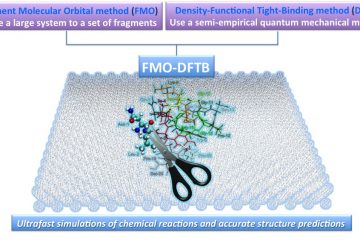
Professor Stephan Irle and Yoshio Nishimoto at the Institute of Transformative Bio-Molecules (ITbM) of Nagoya University and Dr. Dmitri Fedorov of the National…
Scientists at the University of Hohenheim, Germany, have developed the first biological and bee-friendly Varroose control method. The method exploits the fact, that female mites exude a pheromone which incites the mating behavior of the males.
After isolating the pheromone and identifying its components, followed another breakthrough with the discovery, that single components of the pheromone affect the mating behavior effectively, too. Currently the scientists run successful field tests using oleic acid, a low-priced component, which is unproblematic with regard to food regulations and suitable for application as a spray.
The hierarchical and precisely controlled process creating ribosomes in living cells is known as ribosome assembly and is relatively little researched. In the eyes of many experts the early processes in the creation of ribosomes offer attractive targets for antimicrobial agents. The systematic search for such substances is made more difficult by the fact, that currently no suitable screening processes exist.
The present invention consists of stable bacterial strains with ribosomal subunits incorporating fluorescent markers, which have growth characteristics similar to wild type, and which have an intact translation apparatus. The positioning of the fluorophores allows for disturbances in the ribosome assembly to be detected in vivo by a fluorescence-based readout process. The process has been optimized for use with multi-well plates and thus is suitable for use in high throughput screenings (HTS).
The trade fair, one of the world’s leading events for educational technology, is taking place from 21 to 24 January 2015 at the EXCEL exhibition centre, in…

The Mainz chemistry professor Katja Heinze and her Luxembourg cooperation partner Dr. Patrick Choquet have received the Interregional Research Award for the…
In vitro transcription/translation systems (ivtt) are used in biotechnology mainly to produce recombinant proteins whose production in vivo would be toxic. The experimental analysis normally involves autoradiography, i.e. it requires the labelling of translation products with radioactive isotopes. Handling these isotopes is expensive, a potential health hazard and limits throughput.
The present invention consists of stable bacterial strains with ribosomal subunits incorporating fluorescent markers, which have growth characteristics similar to wild type and which have an intact translation apparatus. This opens the opportunity for measuring the translation activity in real time using fluorescence. It is possible to carry out experiments in a shorter time and at less cost in multi-well plates, varying several reaction parameters in parallel to optimize yield.